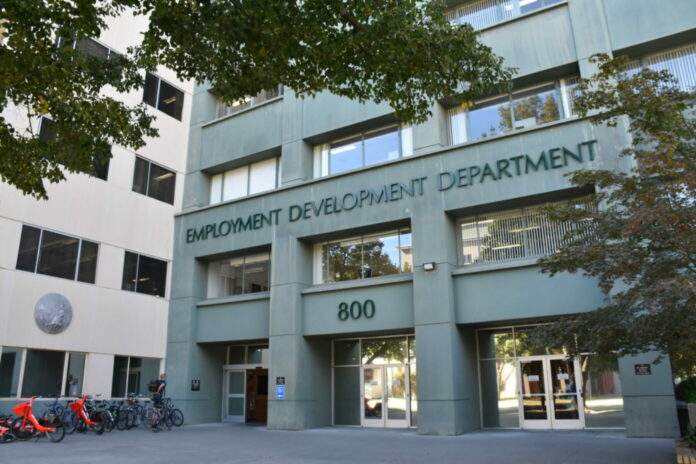L.A. County’s unemployment rate dipped to 4.9% in June from 5.0% in May even as the number of workers on payrolls slipped amid the first indirect impacts of the writer’s strike, according to state figures released July 21.
The drop in the unemployment rate was spurred by increases in both the county’s labor force and in the number of residents reporting they were working. According to the state Employment Development Department figures, the labor force increased by 17,000 to 5.02 million, while the number of working residents also rose by 17,000 to 4.77 million.
These two indicators rising in sync generally signal a healthy economy: more people entered the labor force looking for work and more people found work.
The county’s unemployment rate has been hovering near 5% for several months now, up from 4.5% in June of last year. Yet it’s still higher than the 4.6% statewide rate and significantly more than the national 3.6% rate.
The EDD also releases a breakout of unemployment rates by city. For June, the county’s largest two cities – Los Angeles and Long Beach – reported unemployment rates of 5.5% and 5.2% respectively.
The lowest unemployment rate among cities with a labor force exceeding 10,000 was 2.2% in Lomita, while the highest was 7.6% in Calabasas.
For cities in the San Fernando, Conejo, Santa Clarita and Antelope valleys, after Calabasas’ highest unemployment rate in the county for June, Burbank was next at 7.3%, followed by Palmdale at 6.9% and Lancaster at 6.7%.
On the low end for cities with workforces exceeding 10,000 was San Fernando at 4.1%, followed by Glendale at 5.1% and Santa Clarita at 5.2%. Of course, Los Angeles, with its 5.5% rate, also comprises a significant portion of the San Fernando Valley’s job market.
On the payroll jobs front, the EDD figures showed a drop of 6,100 across the county in June to 4,637,600. As is usual for June, the biggest component of the job loss was in the education sector as the academic year came to an end and substitute teachers and other year-by-year employees saw their positions end for the year. Between public sector education and private educational institutions, a total of 11,000 jobs were shed in June.
Of course, this is a seasonal effect and the EDD also released payroll jobs numbers that adjusted for it. According to those adjusted figures, the total number of payroll jobs in L.A. County fell by roughly 4,000, or slightly less than 1%.
After education, the sector shedding the most jobs on net was health care/social assistance, which was down 2,700 jobs.
The motion picture/sound recording industry saw a drop of 1,400 jobs. But the EDD release put a huge asterisk by this number: “Workers on strike are excluded from the employment data, so the current Writers Guild of America strike would not be reflected in the loss in the information sector.”
That means the official tally of job losses in the entertainment industry is limited to indirect impacts: companies in the industry that don’t have writers yet had to pare back their workforces due to the stoppages in the industry.
But in future months, this indirect impact will grow, especially now that members of the Screen Actors Guild/American Federation of Television and Radio Actors are also on strike, effectively halting the vast majority of productions in their tracks.
On the flip side, the construction industry saw the biggest gain in June, up 3,100 jobs from May. Manufacturing was next, adding a net 2,200 jobs, followed by accommodation/food services, which was up 1,100 jobs.
For the 12 months ending in June, the county added 106,000 jobs for a growth rate of 2.3%. Health care/social assistance led the way with a net gain of 41,700 jobs. Accommodation/food services was next at 23,700 jobs, followed by professional/business services (up 11,700 jobs) and transportation/warehousing (up 11,200 jobs).
